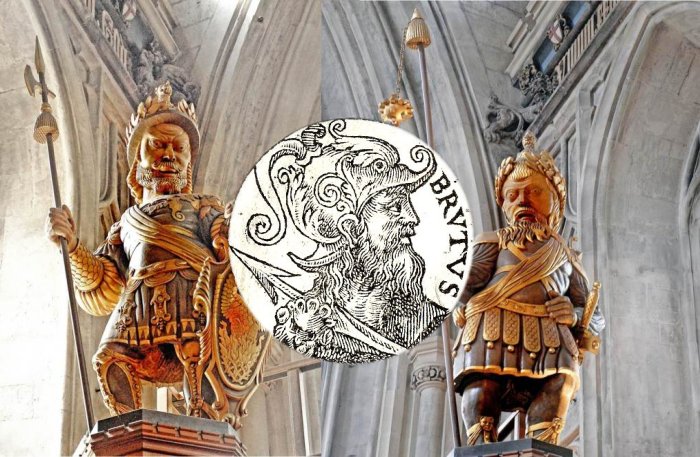Brutus Of Troy: First King Of Britain Or Just A Myth?
Ellen Lloyd - AncientPages.com - Whether Brutus of Troy was Britain's first king and London's founder remains a controversial subject debated among scholars. Yet, some considered the story of Brutus of Troy to be a historical account based on actual events. It is a fascinating story originating from intriguing myths.
According to medieval legend, the founder and first king of Britain was the Trojan exile known as Brutus of Troy, who was said to be the descendant of the Trojan hero, Aeneas.
This legend first appears in the Historia Britonum, a 9th-century historical compilation attributed to Nennius, a Welsh monk of the 9th century.
Geoffrey of Monmouth gives a similar but more detailed account in his Historia Regum Britanniae in the 12th century.
The problem with both accounts is that Brutus of Troy does not appear in classical works and is not regarded as a historical figure by most historians. From the Historia Britonum, we learn that "the island of Britain derives its name from Brutus, a Roman consul" who conquered Spain.
Who was Brutus of Troy?
Brutus was supposed to be a Trojan prince descended from Trojans who had escaped the fall of Troy. These people had settled in Italy on the banks of the Tiber.
In a hunting accident when Brutus was in his teens, he killed his father with an arrow. He was punished by being exiled from Italy. When he came to Greece, he encountered some Trojan people enslaved since the fall of Troy.
Brutus became their leader, and they became collectively known as 'Britons' (after Brutus). After a series of battles, Brutus freed the enslaved Trojans and defeated the Greek king Pandrasus by attacking his camp at night.
The Brutus Stone in Totnes. Image credit: Wikipedia
After capturing the guards, he took him hostage and forced him to let his people go. Pandrasus, in gratitude for his life, gave Brutus his daughter, Ignoge, in marriage and enough ships and supplies to leave Greece.
Brutus has a prophetic dream
On his travels, Brutus comes across a deserted island. While exploring the island, he found an abandoned temple for the goddess Diana. Brutus performed certain appropriate sacred rituals in honor of the goddess and fell asleep in front of her statue. Diana appeared to him in a dream and showed him visions of an island in the western oceans called Albion, a home to just a few giants. He learned from the dream that his destiny was to lead his followers there and settle the land founding a new nation destined for greatness.
Brutus meets the great warrior Corineus
Brutus sailed again, and after some adventures in North Africa and a close encounter with the Sirens, Brutus discovered another group of exiled Trojans living on the shores of the Tyrrhenian Sea. These people were led by the great warrior Corineus, a fighter of giants.
While in Gaul, Corineus decided to go hunting in the forests but failed to ask permission from the king of Aquitaine, Goffarius Pictus. Goffarius was enraged, and a war followed between him and the Trojans. One of the casualties was the nephew of Brutus, named Turonus, who was killed in the fighting.
Brutus and Corineus arrive in Britain
The Trojans had more battles with the Gauls, and although they were primarily victorious, they were aware that the Gauls had an advantage in numbers and in being on their home ground. Brutus and Corineus decided to return to the ships with their men and continued their voyage to Britain, then called Albion.
They landed on "Totonesium litus"—"the sea-coast of Totnes." They meet the descendants of Albion, a race of giants led by Gog and Magog, but Brutus and Corineus defeated them.
Brutus of Troy is a legendary descendant of the Trojan hero Aeneas, was known in medieval British legend as the eponymous founder and first king of Britain. Guillaume Rouille (1518?-1589) - "Promptuarii Iconum Insigniorum" - Public Domain
Brutus renamed the island after himself and became its first king. Corineus became ruler of Cornwall, which got its name after him. The two founders and the first king of Britain.o experienced harassment committed by the giants against them. Still, finally, they killed the giants, except for their leader, the largest giant Goemagot, who was saved for a wrestling match against Corineus on Plymouth Hoe.
Corineus threw Goemagot over a cliff to his death. Brutus then founded a city on the banks of the River Thames, which he named Troia Nova (or New Troy). The name was then corrupted to Trinovantum, to be later called London.
Brutus Stone
Geoffrey's Historia says that Brutus and his followers landed at Totnes in Devon. A stone on Fore Street in Totnes, known as the "Brutus Stone," commemorates this. Today the Brutus Stone is said to mark that spot in the modern-day town of Totnes.
There is also a similar stone in London. The legendary London Stone, also known as the Stone of Brutus, has been a city symbol for at least 900 years.
The mysterious Stone Of Brutus was brought to London, but the reason for this decision remains unknown.
Several theories attempt to explain the stone's enigmatic past, but even to this day, this mysterious stone refuses to give up its secrets.
The death of Brutus
Based on ancient sources, Brutus gave his people laws and rules for 24 years until his death and was buried in Trinovantum. His kingdom of Britain was then divided into three kingdoms ruled by his three sons. Locrinus ruled England, Albanactus was a ruler of Scotland, and Kamber became a ruler of Wales.
Was Brutus of Troy the first king of Britain and the founder of London?
As we have seen, the entire story is based on mythical events mixed with some historical accounts. However, Holinshed's Chronicles (1577) considers the Brutus myth factual. The tradition of Brutus' migration to Britain was never questioned until the last century.
Written by - Ellen Lloyd - AncientPages.com
Updated on August 29, 2022
Copyright © AncientPages.com All rights reserved. This material may not be published, broadcast, rewritten or redistributed in whole or part without the express written permission of AncientPages.com
Expand for referencesMore From Ancient Pages
-
 Vikings Brewed Beer With Heated Stones – Old Tradition Popular In Germany, Finland And Baltic States
Archaeology | Dec 14, 2017
Vikings Brewed Beer With Heated Stones – Old Tradition Popular In Germany, Finland And Baltic States
Archaeology | Dec 14, 2017 -
 Secrets Of Bolshoi Zayatsky Island – Mysterious Stone Labyrinths Of Unknown Purpose And Origin
Featured Stories | Oct 21, 2014
Secrets Of Bolshoi Zayatsky Island – Mysterious Stone Labyrinths Of Unknown Purpose And Origin
Featured Stories | Oct 21, 2014 -
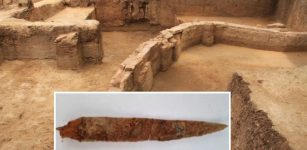 Rare Well-Preserved 2,500-Year-Old Dagger Linked To The Keeladi Civilization Discovered In Tamil Nadu, India
Archaeology | Aug 13, 2021
Rare Well-Preserved 2,500-Year-Old Dagger Linked To The Keeladi Civilization Discovered In Tamil Nadu, India
Archaeology | Aug 13, 2021 -
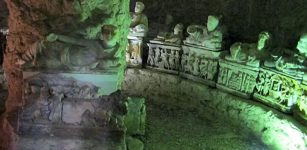 Inghirami Tomb – Spectacular Etruscan Burial With 53 Alabaster Urns In Ancient City Of Volterra, Italy
Featured Stories | Apr 19, 2021
Inghirami Tomb – Spectacular Etruscan Burial With 53 Alabaster Urns In Ancient City Of Volterra, Italy
Featured Stories | Apr 19, 2021 -
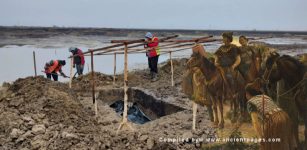 Hun Warrior’s Grave Filled With Gold Treasures Discovered In Romania
Archaeology | Feb 6, 2023
Hun Warrior’s Grave Filled With Gold Treasures Discovered In Romania
Archaeology | Feb 6, 2023 -
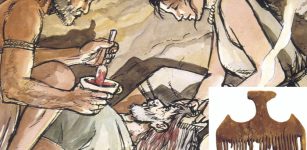 Evidence Of Hallucinogenic Drug Use During Bronze Age Ceremonies Found
Archaeology | Apr 6, 2023
Evidence Of Hallucinogenic Drug Use During Bronze Age Ceremonies Found
Archaeology | Apr 6, 2023 -
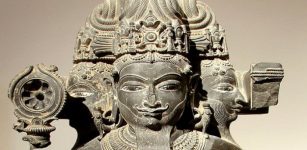 Brahma: First God In Hindu Trimurti, Creator Of The World And All Creatures
Featured Stories | Apr 17, 2019
Brahma: First God In Hindu Trimurti, Creator Of The World And All Creatures
Featured Stories | Apr 17, 2019 -
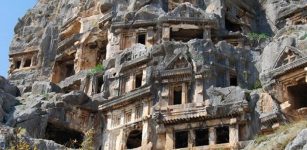 Magnificent Ancient Rock-Cut Lycian Tombs Of Myra, Antalya, Turkey
Civilizations | Aug 9, 2015
Magnificent Ancient Rock-Cut Lycian Tombs Of Myra, Antalya, Turkey
Civilizations | Aug 9, 2015 -
 Catastrophic Final Flooding Of Doggerland By The Storegga Tsunami – New Study Results
Archaeology | Dec 2, 2020
Catastrophic Final Flooding Of Doggerland By The Storegga Tsunami – New Study Results
Archaeology | Dec 2, 2020 -
 Skeletal Remains Of A 1,500-Year-Old Byzantine Ascetic Monk, Chained In Iron Rings – Uncovered Near Jerusalem
Archaeology | Jan 4, 2023
Skeletal Remains Of A 1,500-Year-Old Byzantine Ascetic Monk, Chained In Iron Rings – Uncovered Near Jerusalem
Archaeology | Jan 4, 2023 -
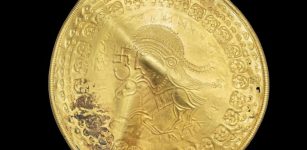 Vindelev Treasure Re-Writes Ancient History – World’s Oldest Runic Inscription Of God Odin Found On Ancient Gold Pendants
Archaeology | Mar 8, 2023
Vindelev Treasure Re-Writes Ancient History – World’s Oldest Runic Inscription Of God Odin Found On Ancient Gold Pendants
Archaeology | Mar 8, 2023 -
 Prehistoric Anomaly On The Tennessee-North Carolina Border Baffles Scientists
Featured Stories | Jul 30, 2024
Prehistoric Anomaly On The Tennessee-North Carolina Border Baffles Scientists
Featured Stories | Jul 30, 2024 -
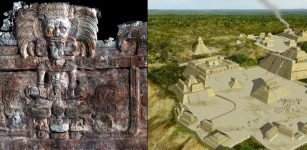 Spectacular Discovery Of Ancient Tombs Beneath Maya Pyramids Can Unravel The Mystery Of The Snake Kings
Archaeology | Oct 17, 2016
Spectacular Discovery Of Ancient Tombs Beneath Maya Pyramids Can Unravel The Mystery Of The Snake Kings
Archaeology | Oct 17, 2016 -
 Danger Lurking In The Woods – Unknown Force And Mysterious Lights – Part 1
Featured Stories | Jul 6, 2018
Danger Lurking In The Woods – Unknown Force And Mysterious Lights – Part 1
Featured Stories | Jul 6, 2018 -
 Legend Of The Blue Men Of Minch: Were They Mythological Creatures Or Real Men?
Featured Stories | May 13, 2016
Legend Of The Blue Men Of Minch: Were They Mythological Creatures Or Real Men?
Featured Stories | May 13, 2016 -
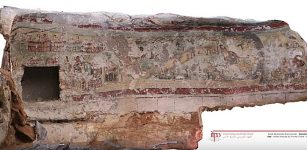 1,800-Year-Old Richly Painted Tomb Unearthed In Northern Jordan
Archaeology | Oct 1, 2018
1,800-Year-Old Richly Painted Tomb Unearthed In Northern Jordan
Archaeology | Oct 1, 2018 -
 People Who Carry Neanderthal Gene Variants Have Greater Pain Sensitivity
DNA | Oct 11, 2023
People Who Carry Neanderthal Gene Variants Have Greater Pain Sensitivity
DNA | Oct 11, 2023 -
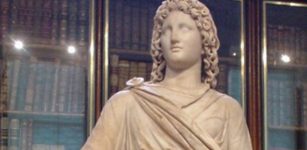 Paris Of Troy: He Caused Destruction Of Troy As The Seer Had Predicted
Featured Stories | Mar 26, 2019
Paris Of Troy: He Caused Destruction Of Troy As The Seer Had Predicted
Featured Stories | Mar 26, 2019 -
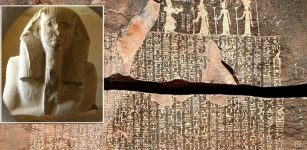 Djoser – Most Outstanding King Of The Third Dynasty In Ancient Egypt And His Step Pyramid
Featured Stories | Sep 7, 2021
Djoser – Most Outstanding King Of The Third Dynasty In Ancient Egypt And His Step Pyramid
Featured Stories | Sep 7, 2021 -
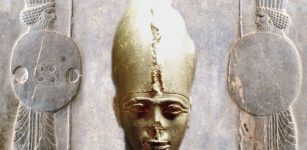 Pharaoh Psamtik III’s Deadly Encounter With Cambyses II Of Persia Ended The 26th Dynasty Of Egypt
Featured Stories | Apr 16, 2021
Pharaoh Psamtik III’s Deadly Encounter With Cambyses II Of Persia Ended The 26th Dynasty Of Egypt
Featured Stories | Apr 16, 2021

